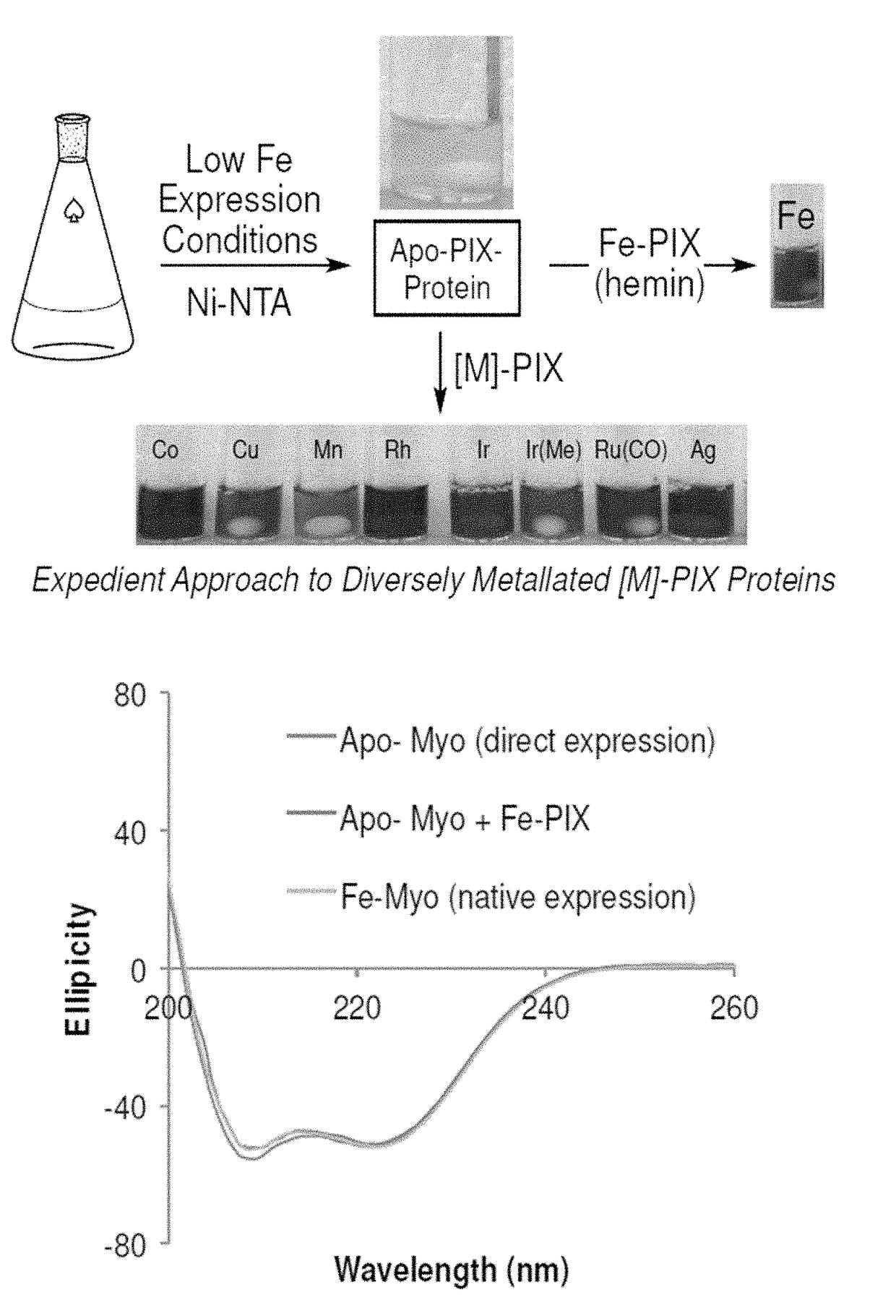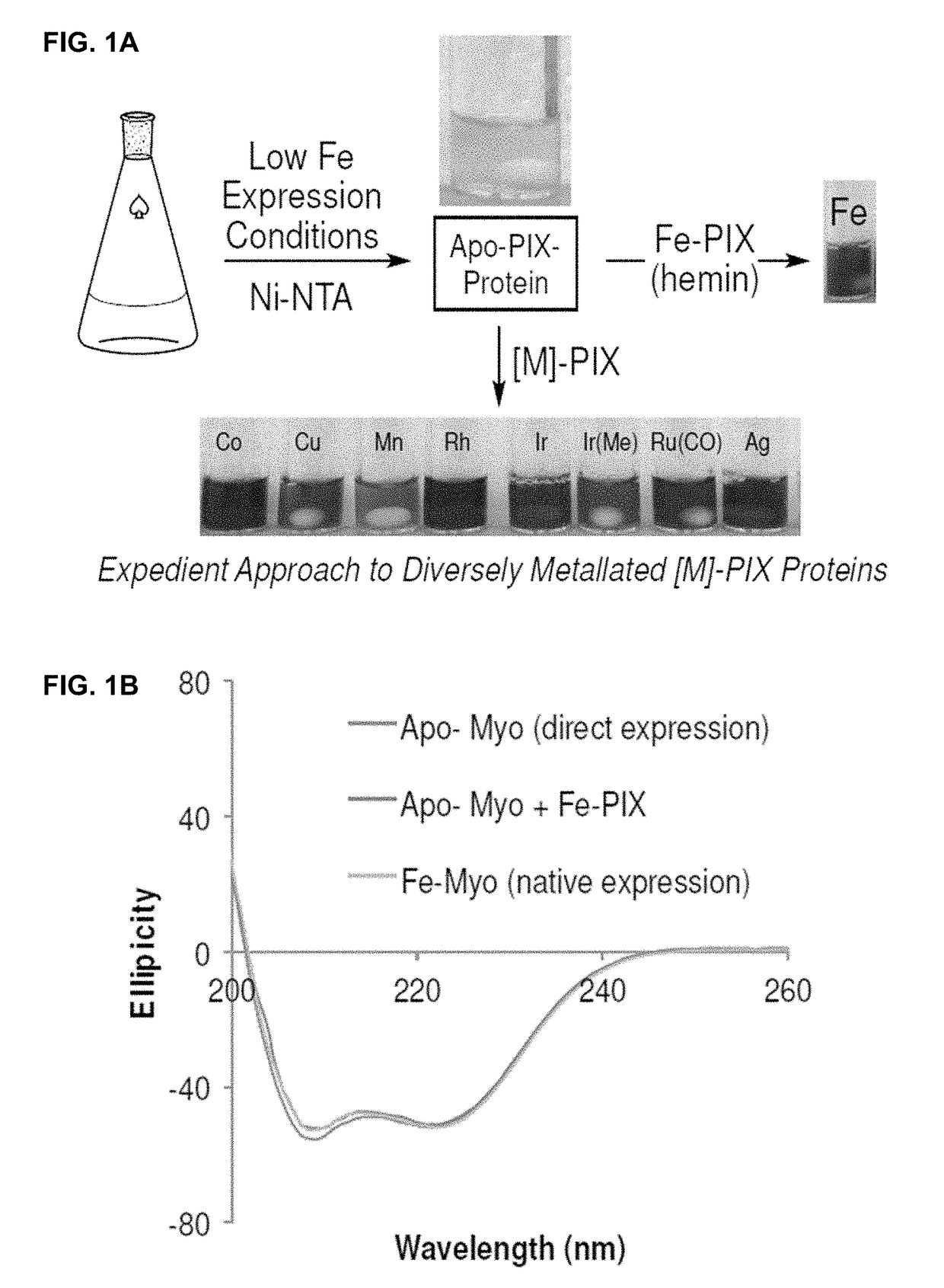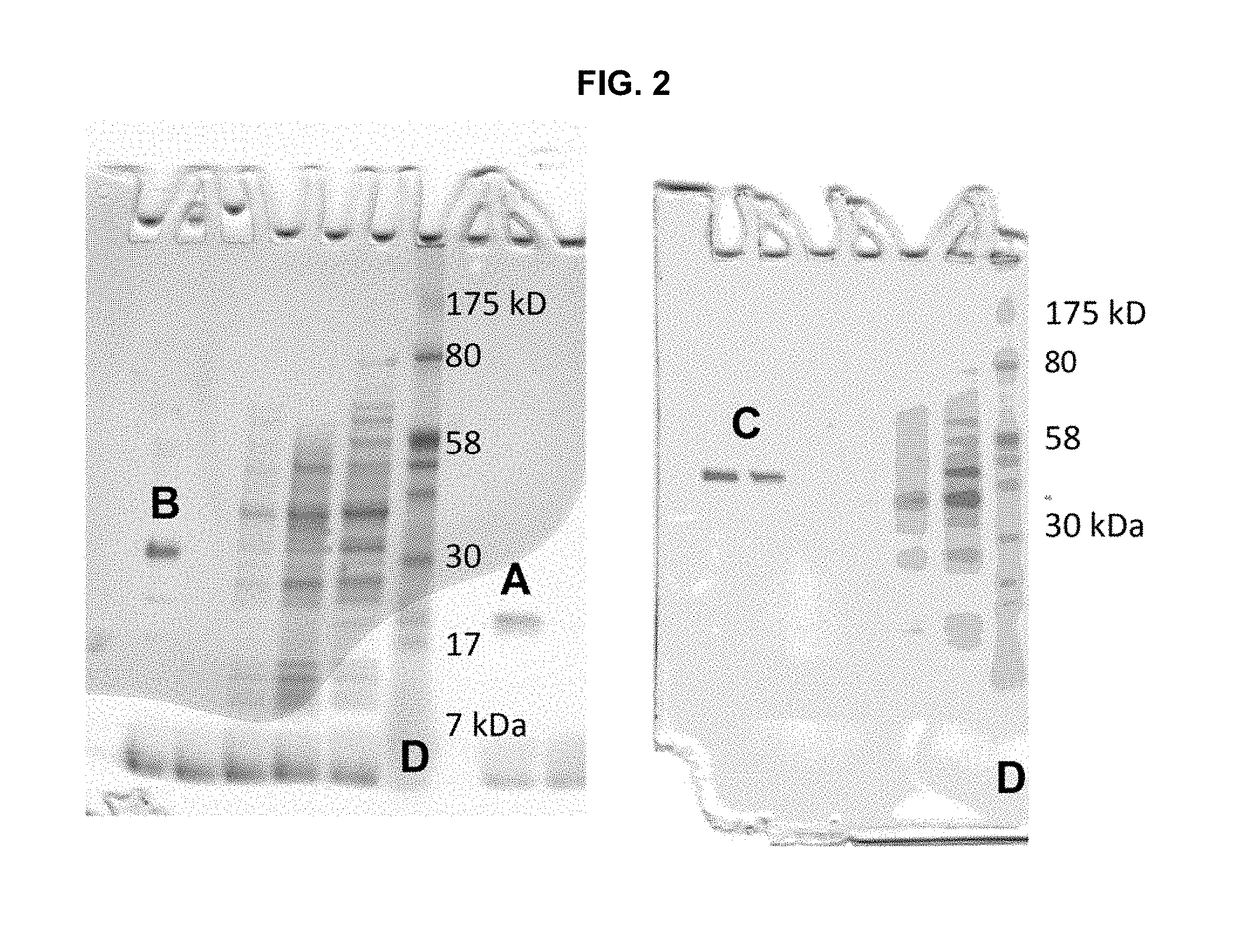Artificial metalloenzymes containing noble metal-porphyrins
a technology of artificial metalloenzymes and metalporphyrins, which is applied in the field of artificial metalloenzymes containing noble metalporphyrins, can solve the problems of global properties of artificial metalloenzymes, limited reactions such as biological transformations, and inability to reflect cumulative properties. , to achieve the effect of increasing activity and selectivity
- Summary
- Abstract
- Description
- Claims
- Application Information
AI Technical Summary
Benefits of technology
Problems solved by technology
Method used
Image
Examples
example 1
enyldiazoacetate
[0235]
[0236]To a stirred solution of methyl phenylacetate (6.0 ml, 40 mmol) and 4-acetamidobenzenesulfonyl azide (p-ABSA, 14.4 g, 60 mmol) in acetonitrile (80 ml) at 0° C., 1,8-diazabicycloundec-7-ene (DBU, 9.6 ml, 64 mmol) was added dropwise. The cooling bath was removed, and the reaction was allowed to continue stirring overnight. The reaction mixture was diluted with dichloromethane (˜60 ml), washed with water (2ט50 ml), dried over MgSO4 and evaporated. The crude product was purified by column chromatography on silica gel, with a mixture of hexane and ethyl acetate (100:0 to 95:5 gradient) as the eluent. Fractions of the pure product were combined, and the solvent evaporated, yielding 5.5 g (78%) of product. The NMR data match those of the reported molecule (Nakamura et al. (2000) J. Am. Chem. Soc. 122:11340).
example 2
-methoxyphenyl)diazoacetate
[0237]
[0238]To a stirred solution of methyl (2-methoxyphenyl)acetate (3.2 ml, 20 mmol) and 4-acetamidobenzenesulfonyl azide (p-ABSA, 7.2 g, 30 mmol) in acetonitrile (40 ml) at 0° C., 1,8-diazabicycloundec-7-ene (DBU, 4.8 ml, 32 mmol) was added dropwise. The cooling bath was removed, and the reaction was allowed to continue stirring overnight. The reaction mixture was diluted with dichloromethane (˜60 ml), washed with water (2ט50 ml), dried over MgSO4. After filtration, the volatile material from the filtrate was evaporated under reduced pressure. The crude product was purified by column chromatography on silica gel, with a mixture of hexanes and ethyl acetate (100:0 to 95:5 gradient) as the eluent. Fractions of the pure product were combined, and the solvent evaporated, yielding 3.9 g (95%) of product. The NMR data match those of the reported molecule (Huw et al. (2001) Org. Lett. 3:1475)).
example 3
methoxyphenyl)diazoacetate
[0239]
[0240]In a closed vial, a solution of (2-methoxyphenyl)acetic acid (3.3 g, 20 mmol) in ethanol (20 ml), containing several drops of sulfuric acid, was stirred overnight at 80° C. The volatile materials were evaporated under vacuum. The residue was dissolved in ethyl acetate (˜40 ml), washed with NaHCO3 sat. (40 ml) and water (40 ml), and dried over MgSO4. After filtration, the volatile material from the filtrate was evaporated under reduced pressure. The resulting crude product was used in the next step without further purification.
[0241]To a stirred solution of ethyl (2-methoxyphenyl)acetate and 4-acetamidobenzenesulfonyl azide (p-ABSA, 7.2 g, 30 mmol) in acetonitrile (40 ml) at 0° C., 1,8-diazabicycloundec-7-ene (DBU, 4.8 ml, 32 mmol) was added dropwise. The cooling bath was removed, and the reaction was allowed to continue stirring overnight. The reaction mixture was diluted with dichloromethane (˜60 ml), washed with water (2ט50 ml), and dried ove...
PUM
| Property | Measurement | Unit |
|---|---|---|
| pH | aaaaa | aaaaa |
| pH | aaaaa | aaaaa |
| temperature | aaaaa | aaaaa |
Abstract
Description
Claims
Application Information
 Login to View More
Login to View More - R&D
- Intellectual Property
- Life Sciences
- Materials
- Tech Scout
- Unparalleled Data Quality
- Higher Quality Content
- 60% Fewer Hallucinations
Browse by: Latest US Patents, China's latest patents, Technical Efficacy Thesaurus, Application Domain, Technology Topic, Popular Technical Reports.
© 2025 PatSnap. All rights reserved.Legal|Privacy policy|Modern Slavery Act Transparency Statement|Sitemap|About US| Contact US: help@patsnap.com



